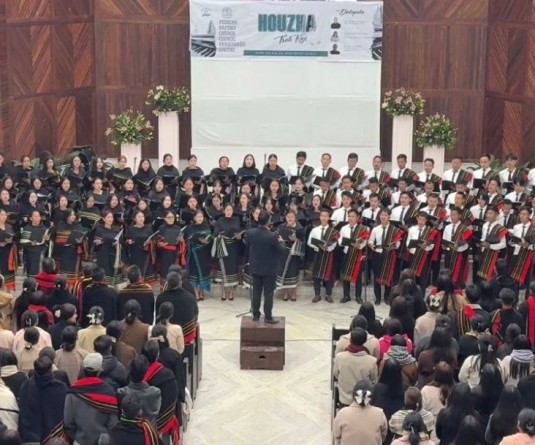Demonstration by New Phor community during the Millet Festival held in New Phor village, Phek district on August 9.
Millet Festival marks International Day of the World’s Indigenous Peoples
Phek, August 9 (MExN): “Our ancestors always believed that even a single grain of millet can save a person from dying,” stated Mathsiilu, community elder and Millet Sister from New Phor during the Millet Festival at New Phor village, Phek district on August 9. The Millet Festival was observed in commemoration of the International Day of the World’s Indigenous Peoples.
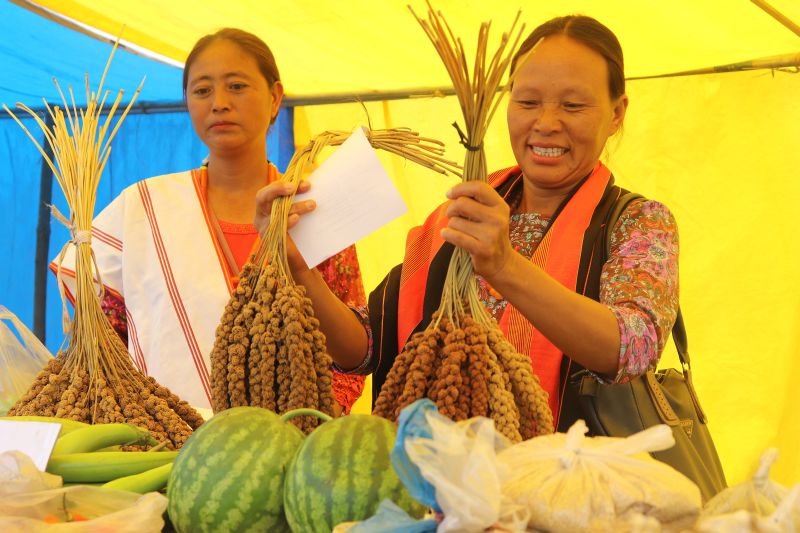
Phor Millet Sisters at the Millet Festival held in New Phor village, Phek district on August 9.
Celebrated under the theme ‘millets for community resilience’, the festival was organised by the Millet Sisters, New Phor Village in collaboration with North East Network (NEN) and Millet Network of India. Around 200 millet farmers, leaders and elders from five villages including New Phor, Phor, Wuzu, Shatuzha and Yisisotha were part of the event.
Sharing her experience, Mathsiilu noted that before converting to Christianity, she participated in traditional rituals prior to the sowing of millets which were sacred to the community. After the advent of Christianity, she has seen the community offering prayers in the church for the crops and which in a way is continuing the elder’s wisdom of respecting our resources. “My parents always insisted on growing more millets than paddy as it ensures security in situation such as famines,” she recollected.
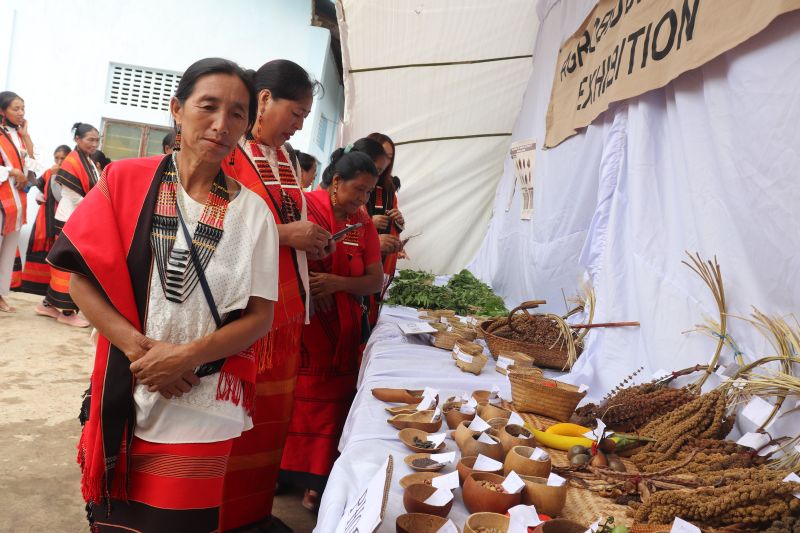
Seed display set up during the Millet Festival held in New Phor village, Phek district on August 9.
Gracing the event as special guest, Mhonchumo, SDAO Meluri expressed his appreciation for the communities’ interest on millets. He stressed the importance of millets and called on the community to work together with the department in promoting such important crops. He also assured his support and assistance to the communities to promote millet farming.
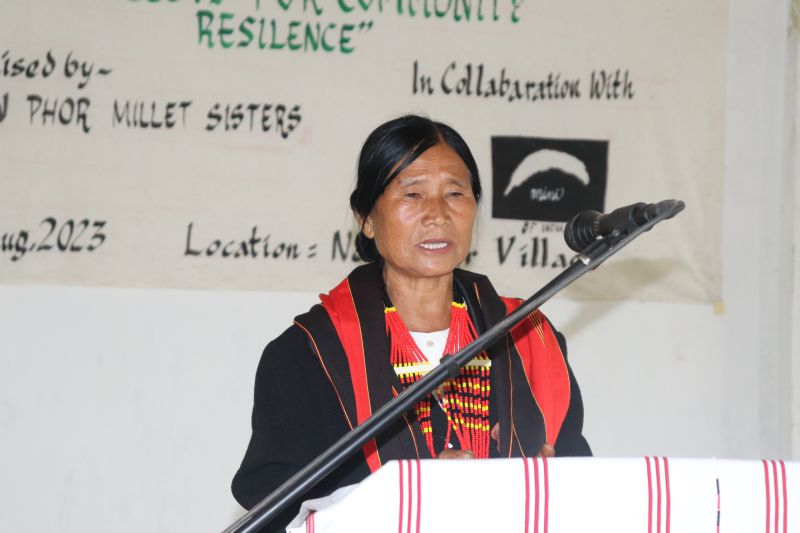
Mathsiilu, community elder and Millet Sister from New Phor sharing her experience during the Millet Festival held in New Phor village, Phek district on August 9.
Delivering the keynote address, Vilazonuo, NEN highlighted that Millet is deeply rooted in the indigenous communities’ culture and traditions. While acknowledging that rapid change is taking place in local communities’ food and farming systems leading to loss of our biodiversity, millet based bio-diverse farming practised by farming communities is the keystone to build communities’ resilience. And that ‘millet for community resilience’ meant strengthening our communities food systems by encouraging millet based bio-diverse farming through partnership and collaboration between community leaders, governments, NGOs and policy makers for a healthy planet with healthy people and a sustainable future for all. And Millets festival is one platform to bring together various stakeholders in addressing the current challenge of our time i.e. climate change, food security issues that our communities are facing or being impacted with.
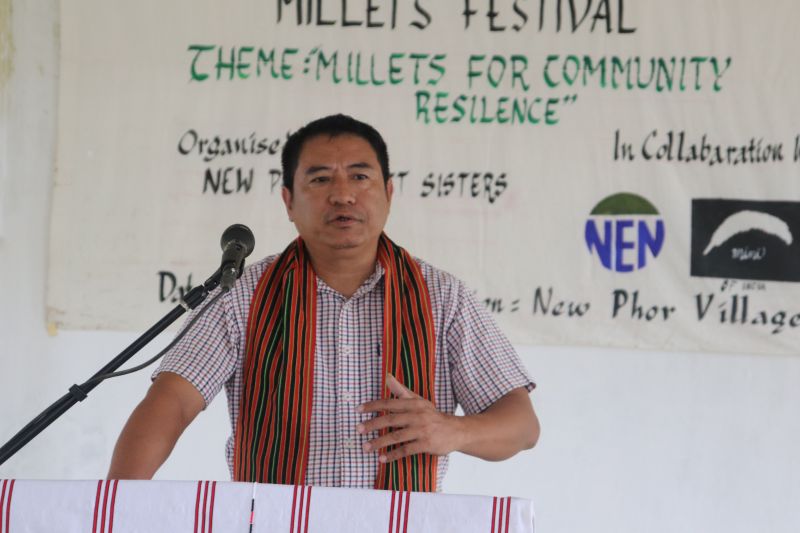
Mhonchumo, SDAO Meluri addressing the the Millet Festival held in New Phor village, Phek district on August 9.
S Teti, VCC, Wuzu village in his speech said that “Millets was most the important crop than rice in our Phor area.” However, he laments on the fact that with the coming of better roads, markets the communities interest and dependency on outside food increased this leading to a decline in millets.
Another narrative he heard while growing up was that millets were portrayed to have a negative impact on health whereas researchers now say otherwise.
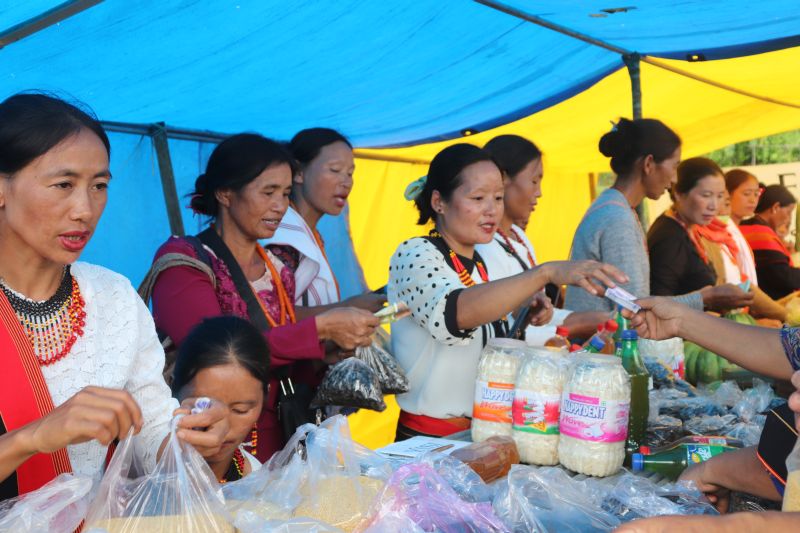
Farmers market set up during the Millet Festival held in New Phor village, Phek district on August 9.
He acknowledged the contribution of women and mothers, particularly the Millet Sisters in Phor area, who have conserved traditional seeds and slowly brought back millets to their plates and farms through collective farming. He also shared the increased demand for millet from friends and families living in urban areas, and views millet cultivation as a good livelihood opportunity. He assured the Millet sisters his support and called on the other community leaders too to do the same.
Other highlights of the festival included cultural performances on millet sowing and harvesting, Agro-biodiversity display and farmers market.




